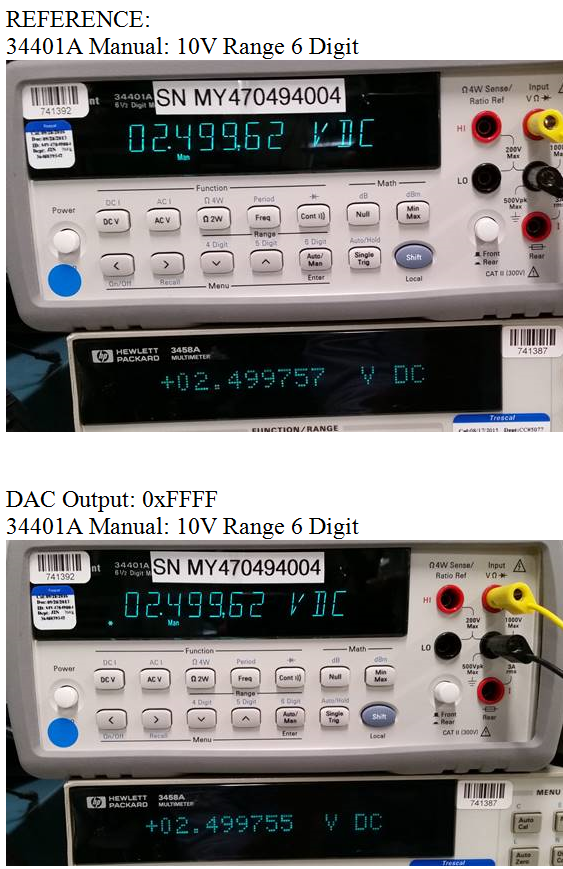Hi Everyone,
I am currently testing the DAC80004 with the DAC80004 EVM.
There are 2 strange things that i noticed and could not be understood by me.
1) The board has a onboard 2.5V reference. But when i measured the reference voltage(TP2), I am getting 2.499V
But when i set the voltage to max. (02 0F FF FF), I am getting 2.4998 V which is higher than the reference voltage i measured, The precision 4 digital after decimal point is important to me.
If i use 2.4998 to calculate the output voltage, The output is somewhat accurate and The voltage error is maxed around 0.2mV.(Is this expected performance ?)
But if i used 2.499 to do the calculations, The error is much larger.
2) Also for the on board 5V reference ,The measured reference voltage at TP2 is exactly 5V. The max output is 5.0003V which is higher than the reference
I think the DAC meets my accuracy requirement, But i would like to know what is going on,
Thanks,
Eddy


